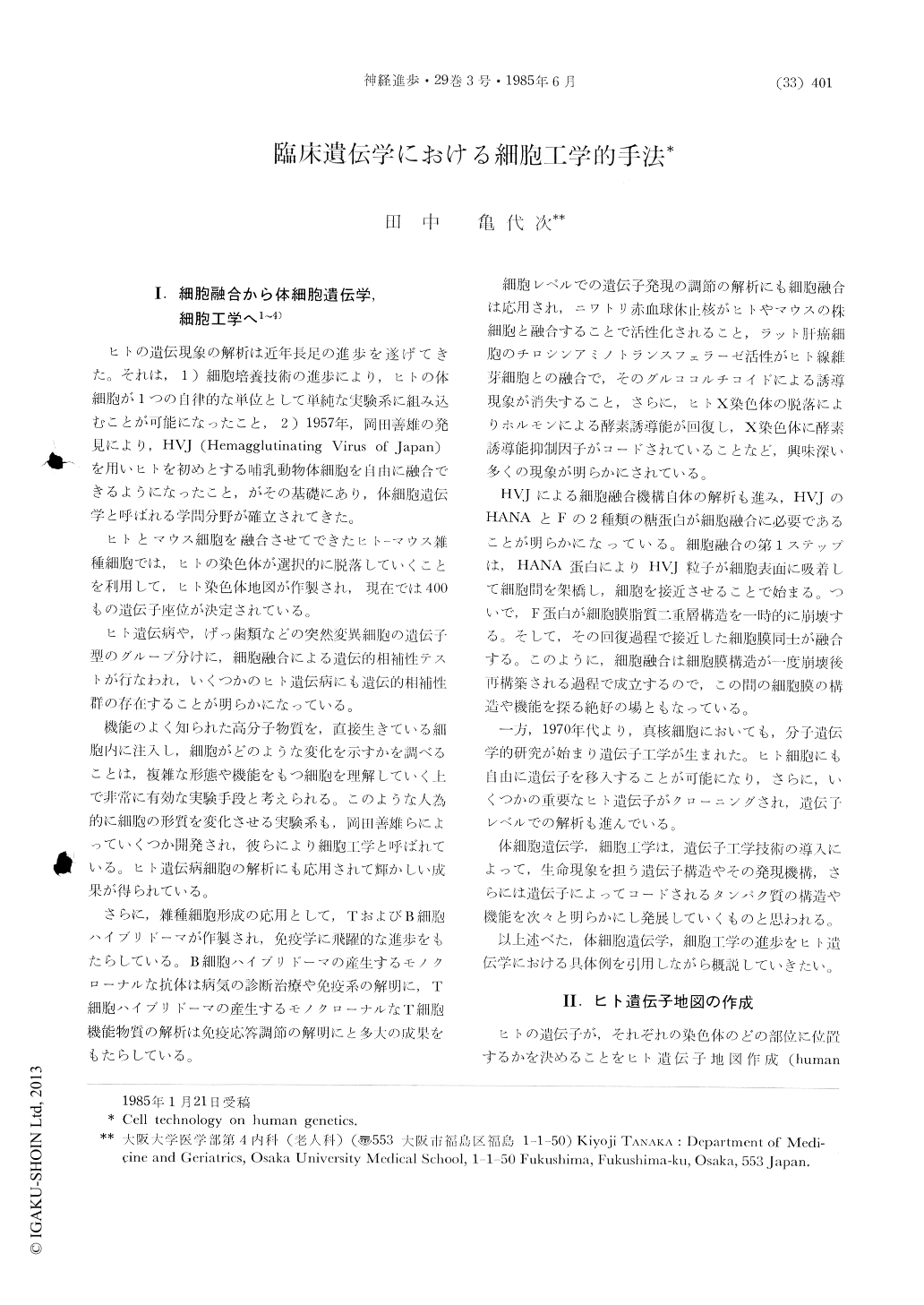Japanese
English
- 有料閲覧
- Abstract 文献概要
- 1ページ目 Look Inside
I.細胞融合から体細胞遺伝学,細胞工学へ1〜4)
ヒトの遺伝現象の解析は近年長足の進歩を遂げてきた。それは,1)細胞培養技術の進歩により,ヒトの体細胞が1つの自律的な単位として単純な実験系に組み込むことが可能になったこと,2)1957年,岡田善雄の発見により,HVJ(Hemagglutinating virus of Japan)を用いヒトを初めとする哺乳動物体細胞を自由に融合できるようになったこと,がその基礎にあり,体細胞遺伝学と呼ばれる学問分野が確立されてきた。
ヒトとマウス細胞を融合させてできたヒト—マウス雑種細胞では,ヒトの染色体が選択的に脱落していくことを利用して,ヒト染色体地図が作製され,現在では400もの遺伝子座位が決定されている。
On the basis of the establishments of culture method of human somatic cells in vitro and cell fusion technique by HVJ (Hemagglutinating Virus of Japan; Sendai virus) which was discovered by Yoshio Okada in 1957, the human somatic cell genetics have been developed very rapidly.
In somatic cell hybrid between human and mouse cells, the human chromosome is preferentially lost randomly. Taking advantage of this phenomenon, more than 400 human genes have been mapped on specific chromosome.

Copyright © 1985, Igaku-Shoin Ltd. All rights reserved.


